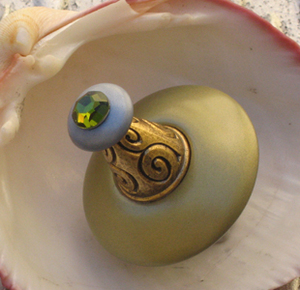Magazines are everywhere. They are proudly displayed in bookstores, gas stations, minimarts, and the most memorable place, the check out at grocery stores. They have always been one of the most influential forms of journalism, resonably withstanding even the pressures and easy access to Internet journalism. Magazines are full of useful information and juicy gossips, two things people apparently cannot live without. Some magazines also seem to be dictating unrealistic gender stereotypes, sending subliminal messages to both men and women. After perusing three different magazines the conclusion might be drawn that magazines are portraying men and women in a unrealistic terms, providing messages to men and women about how they should look, act, shop, etc.
Men’s Health is a magazine directed toward men and their health and is said to be “The Largest Men’s Magazine. At first glance one can tell the magazine is all about losing weight and sex. The August 2008 issue is touted as a “Special Lose Your Gut Issue” as broadcast across the top of the magazine in large white letters. On the cover is the good-looking Aaron Eckhart depicted in black and white. He looks relaxed yet he has a very strong face with no smile. Around his picture are the typical magazine headlines which include titles about getting a better body, flat stomachs, six packs, fast results and sex tips. The front cover seems to tell you in no uncertain terms that to be a man you have to have a six-pack and be stellar in the bedroom.
Throughout the magazine there are a variety of ads: some for insurance, sports vehicles, jewelry, cologne/body washes, and exercise equipment. The very end of the magazine includes a few pages of ads for sex toys and books about “hitting the right spots”. Particularly for the sexually oriented ads the women are nearly naked, with strategically placed hands or positioning against the good looking guy next to them. Throughout the rest of the magazine the picturing of women is similar. Women are seen in their underwear, almost-nothing swimsuits, or sexy, low cut, short dresses such as the wardrobe of the actresses on “Sex and the City”. Similar to the depiction of men, the women do not seem to be overweight. The men are seen shirtless, buff and sweaty, wearing sports gear, or wearing a nice business suit. In all the ads the men have a nice hairstyle, a craggy face and are always depicted as doing something active. Besides portrait shots, there is only one other photo where a man is just posing sitting on a chair. Everywhere else the men are swimming or running or working, etc. Men are mostly seen from the waist up unless their “activity” involves the legs, while women are shown full body, whether standing up or sitting with their legs in full view. Even ads for electronics are “manly” with their dark blue and black colors. All of these ads strongly hint that all men are, or should be, buff, sweaty but smell good, active, flat bellied, and must have sexy, half-naked women all around them.
The content of the articles continue the theme. They are about sex, sports, military, losing weight, and women. There is even an article titled “How to Raise a Tough Guy”. So much for the kinder, gentler man theory. There is also an article about a woman and why she likes “green guys”. The woman, although fully clothed, is wearing tight jeans, high boots and a flannel shirt and looks pretty hot, to use the vernacular of the day. Her opinion is that guys should be green, an earth boy, i.e. active, once again sweaty but smelling good, and a champion of the environment. The messages that men reading the magazine might absorb is that to get the sexy woman and to be a real man you have to demonstrate your possesion of these specific qualities.
It is no surprise that women’s magazines do the same stereotyping of women. They portray an ideal image for women to mimic, but for most this image would seem very unrealistic. The July 2008 issue of Marie Claire features Sarah Jessica Parker with a flawless face and a cute pink flowery dress. The issue is a beauty guide issue giving tips for makeup, dating, weight loss, and clothes, as stated by the headlines on the cover. The magazine is full of makeup ads with models that have perfect skin, shinny hair, smooth legs, big eyes, long necks, and pouty big lips. The list could go on and on! Most women are shown full length or just their heads with bare shoulders. There are many advertisements for lotions and hair products and exercise equipment giving messages like “having smooth skin is a must and your hair has to be perfect, having a flat stomach is a necessity, buy our products!” Advertisements show women with well muscled men around them, giving the signal that being “beautiful” will get you all the handsome men in the world. After looking through this magazine the message to women is clear: Beauty equals a great body, shinny hair, low cut shirts, short dresses, bedroom eyes, flawless complexion, etc. The articles promote these criteria. A featured article for the edition is about fashion trends for July. No surprise here, for July wear short dresses with very low cut tops. There is not one picture with a girl who is a little on the larger side. There is also a feature called “What I Love About Me”. In this feature a portrait shot is taken of each girl and they give a quote about what they like about themselves. There was only one “bigger” girl quoted, as all the rest were skinny, I mean really skinny. There is also an article about four women who lose their jobs but “do not let it ruin their lives”. Clearly the girls interviewed are not models but a slim girl is used for the highlighted picture for the article and the larger girls get the smaller pictures throughout the article (“Suffering a Layoff”).
There are some magazines that are gender neutral and give information without giving subliminal messages. This can be seen as soon as someone looks at the cover of the June 2008 Smithsonian magazine. Across the top there is a headline about a woman and then a headline about a man. The cover photo is of a shark, and the headline relates to shark’s intelligence. All the ads in the magazine are family friendly ads. There is an ad on one page about insurance with a mother and daughter then on the following page an ad about saving power with a father and son. The ads for cars are for family cars and the ads for jewelry are both for men and women, watches and engagement rings, respectively. The ads are more like classifieds, listing information without pictures and when they do have pictures the women and men are not sexy, they are holding children, watching TV or making food. There are many vacation ads where there are snap shots of candid family vacations the people that are depicted in articles are either with portrait or candid photos from their place of work. There are two instances where there is a male candid photo right next to a female candid photo. It seems as though the editors are trying to keep a balanced number of both genders photographed and discussed. The majority of the pictures in the magazine are of nature or art. None are gender specific.
While the articles in all three magazines are relevant, the gender specific magazines send messages of stereotypical characteristics of men and women. These give a rather narrow version of what men and women should be and what is expected of them from society. The messages sent by some popular magazines may lead to unrealistic expectations by individuals as it relates to their view of how they should look. Some instances of eating disorders have been blamed on pressure to “fit the mold” portrayed by society. Good health and proper diet and exercise can be achieved. The result may not, however, lead to your looking like one of those perfect people portrayed in that slick covered magazine you purchased waiting in line at the cashier’s line at the store. As a 58 year old trying to lose weight, I know I’ll never look like the men in the Bowflex ads. I don’t want to.
Men’s Health, August, 2008
Marie Claire, July, 2008
Smithsonian, July, 2008


